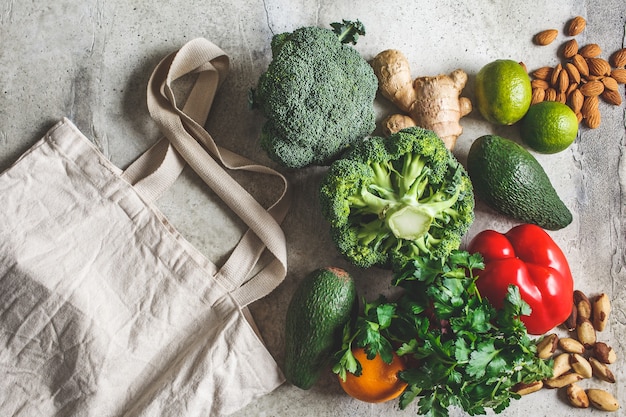Hey there! I’m Emily, and if you’re anything like me, you’ve probably noticed how fast the world of food marketing is evolving. Whether you’re running a restaurant, launching a food product, or just interested in the industry, staying on top of the latest food marketing trends is important to stay relevant and connected with consumers.
In this guide, I’m exploring five major shifts in food marketing that are shaking things up. I promise to keep it real, relatable, and practical. So, let’s jump right into what’s happening in the food marketing world today!
1. Plant-Based Products Are Skyrocketing

Plant-based foods have become more than a trend—a full-blown movement. And trust me, it’s not just vegans driving this shift. Consumers are more health-conscious, and many are experimenting with plant-based options for environmental and ethical reasons. I’ve even noticed some of my friends, who love their steak, suddenly stocking up on plant-based burgers!
But this trend goes deeper. It’s not just about offering a vegan menu or store shelf option. Customers expect innovative plant-based alternatives that mimic the taste and texture of their favourite meats and dairy products. Think about companies like Beyond Meat or Oatly—these brands aren’t just filling a niche; they’re reshaping the mainstream food market.
Here’s a tip: If you’re in the food business, showcasing your plant-based products on social media can give you an edge. People are eager to share healthy finds and eco-friendly choices, so use this opportunity to make your offerings stand out!
2. Transparency is the New Standard
Transparency isn’t just a buzzword anymore—it’s something consumers demand. People want to know where their food comes from, how it’s made, and what’s inside. I always check labels to see if the ingredients are clean and whether the company is open about its sourcing practices.
According to a study I recently came across, about 75% of consumers said they’d switch to brands that provide more detailed product information. That’s huge! Being transparent isn’t optional if you’re a food marketer—it’s a must.
Here are some ways you can build transparency into your marketing:
- Highlight sustainable practices (such as eco-friendly packaging or ethical sourcing).
- Use clear, straightforward language on your product labels.
- Create behind-the-scenes content showing how your food is made. Whether it’s a video tour of your kitchen or factory or posts about your local suppliers, this content builds trust.
People appreciate honesty, which keeps them loyal to a brand.
3. Personalisation is Taking Over
One of the most exciting food marketing trends, in my opinion, is personalisation. People no longer want a one-size-fits-all experience, especially regarding food. Think about it—how often do you browse a menu or an online store and wish you could customise your order exactly how you want?
Personalised experiences are winning over customers because they make us feel special. From restaurants offering fully customisable meals to grocery stores sending personalised product recommendations based on shopping habits, it’s all about tailoring the experience.
For instance, a lot of food delivery apps are now using data to suggest meals based on your dietary preferences or past orders. I’ve noticed certain snack brands offering custom packaging and flavours based on consumer feedback!
How to Tap into Personalisation:
- Use social media polls or quizzes to engage with your audience and discover their preferences.
- Create custom meal plans or food products that cater to individual diets (e.g., keto, paleo, gluten-free).
- Leverage technology like AI to offer personalised recommendations on your website or app.
4. Influencer Marketing is Still Going Strong

Influencer marketing isn’t going anywhere, and in the food industry, it’s becoming more influential (pun intended) than ever. Social media influencers, whether big or small, can connect with their followers on a personal level. I’m much more likely to try a new product after seeing someone I trust rave about it on Instagram!
The key here is authenticity. People can spot fake endorsements a mile away. That’s why micro-influencers—people with smaller but highly engaged audiences—are a great option. They often have more trust with their followers than mega-celebrities and can make your food brand feel more relatable.
How to Harness Influencer Marketing:
- Partner with food bloggers or chefs who align with your brand’s values.
- Consider creating challenges or campaigns encouraging user-generated content (think of Starbucks’ famous red cup challenge!).
- Collaborate with influencers to create exclusive recipes using your product and share them across social platforms.
5. Sustainability Matters More Than Ever
It’s no surprise that sustainability is on everyone’s mind. From climate change to plastic waste, consumers are more eco-conscious, directly impacting their purchasing decisions. I’ve noticed that whenever a brand emphasises its commitment to sustainability, I’m much more inclined to support it.
But it’s not just about slapping “sustainable” on your packaging. Consumers are looking for tangible efforts—like using biodegradable packaging, reducing food waste, and sourcing ingredients locally. Businesses thrive simply by being more mindful of their environmental footprint.
If you’re in the food industry, consider what your brand can do to be part of the solution, not the problem. Simple changes can go a long way, and customers are paying attention.
Easy Wins for Sustainability:
- Reduce plastic packaging and explore compostable or recyclable alternatives.
- Highlight your efforts to minimise food waste or donate surplus products to food banks.
- Consider sourcing ingredients from local farms to reduce your carbon footprint.
Wrapping It Up: Stay Ahead of These Food Marketing Trends
These food marketing trends are shaping the way consumers interact with brands. The world of food is changing fast, and it’s exciting to see how businesses are innovating to meet new demands. From embracing plant-based products and sustainability to leveraging influencers and personalised experiences, staying on top of these trends is key to thriving in this competitive market.
So, whether you’re launching a new food product or trying to breathe new life into your restaurant’s marketing, these trends are here to help you connect with today’s conscious, tech-savvy consumers.
What do you think? Have you noticed any of these trends in your daily life? Let me know in the comments below—I’d love to hear your thoughts!

